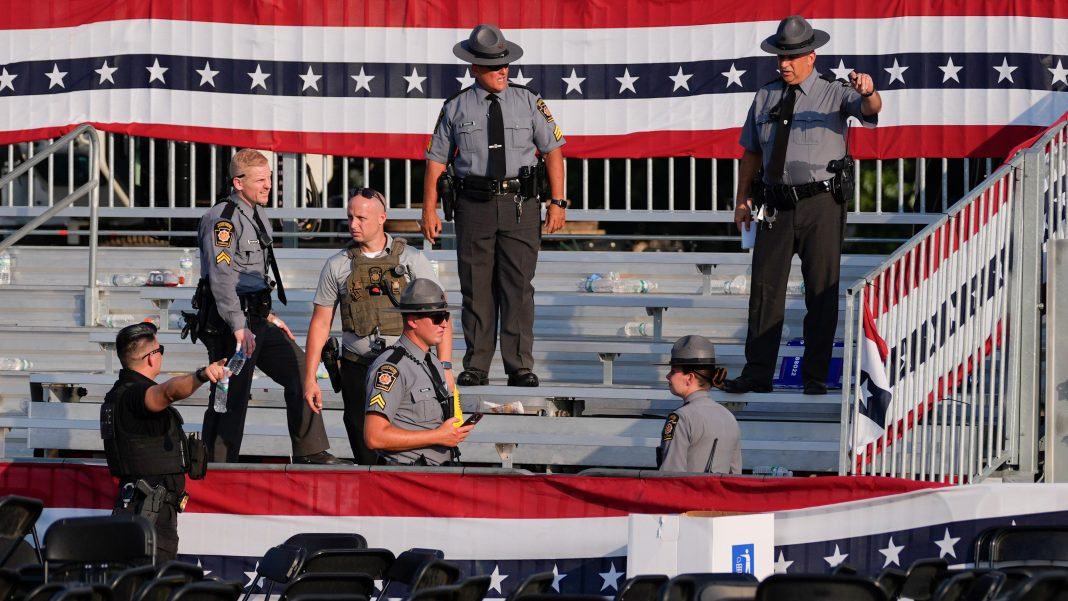In a chilling revelation, the U.S. Secret Service has acknowledged significant failures in its protective measures during a rally in Butler, Pennsylvania, where an assassination attempt on former President Donald Trump took place on July 13, 2024. This incident not only raises questions about the effectiveness of security protocols but also highlights the complexities and challenges faced by law enforcement in safeguarding high-profile individuals.
According to an internal report released by the Secret Service, the agency struggled with various communications and technical difficulties that ultimately compromised the safety of the former president. One of the critical failures identified was the agency’s inability to secure a clear line of sight to Trump. This oversight was particularly egregious in light of the fact that local law enforcement had not been adequately informed of the existing threats to his safety. The report noted that the roof of the AGR building, located near the rally site, was not secured, which allowed the assailant, Thomas Matthew Crooks, to gain an advantageous position from which to launch his attack.
The Secret Service’s advance team failed to coordinate effectively with local law enforcement regarding the deployment of a sniper team on the AGR roof. This lack of due diligence, combined with a fragmented communication network amongst state and local agencies, led to a scenario where vital information—such as the description of the assailant and his suspicious activity—did not reach the Secret Service’s protective detail in a timely manner. “A consistent theme gathered from state and local law enforcement personnel who helped secure the Butler rally was the presence of communications deficiencies,” the report stated.
This breakdown in communication was compounded by the Secret Service’s technical issues with its drone surveillance system. Interestingly, the FBI director testified that Crooks had flown a drone near the rally venue before the attack, suggesting that if the drone system had functioned correctly, it might have provided an early warning about the assailant’s presence. The report underscored that the Butler Farm Show site was perceived as a challenging location for security measures, yet it was chosen primarily for its capacity to accommodate a large crowd.
The ramifications of this incident extend beyond the immediate security failures. The House of Representatives has unanimously passed a bill aimed at ensuring that major presidential candidates receive the same level of protection as sitting presidents. This legislative move comes in response to the recent assassination attempts on Trump and underscores a growing recognition of the need for robust security protocols in an increasingly volatile political landscape. The bill, introduced by Representatives Mike Lawler and Ritchie Torres, now heads to the Senate, where its future remains uncertain.
In the wake of these attempts on Trump’s life, the Secret Service has ramped up its security measures. According to Ranking Member Jason Crow, President Biden has directed the agency to provide enhanced security for both Trump and Vice President Kamala Harris—protection that mirrors what a sitting president would receive. The agency’s current security strategy for Trump includes comprehensive measures such as counter assault, counter surveillance, and even a protective platoon from Palm Beach County, where Trump’s Mar-a-Lago residence is located.
Despite these efforts, there remains skepticism regarding the adequacy of resources allocated to the Secret Service. House Majority Leader Steve Scalise pointed out that Congress has consistently increased the agency’s budget in recent years, suggesting that the challenges faced by the Secret Service are not merely about funding but rather about the efficacy and efficiency of their operations.
Acting Director Ronald Rowe acknowledged the agency’s need for more personnel, stating that they are currently “redlining” agents. This raises important questions about the staffing levels and operational readiness of the Secret Service in protecting those who are under their care.
As we reflect on the events of July 13, it becomes evident that a reevaluation of security protocols, communication strategies, and resource allocation is imperative. The safety of public figures is a national concern, and the failures highlighted by the Secret Service report should serve as a catalyst for reform. Enhanced training, improved inter-agency communication, and better technical capabilities are essential to prevent future incidents and to ensure that those who serve in public office can do so without the looming threat of violence.
In a world where political tensions continue to escalate, the lessons learned from this incident could be vital in shaping a more secure environment for all.


